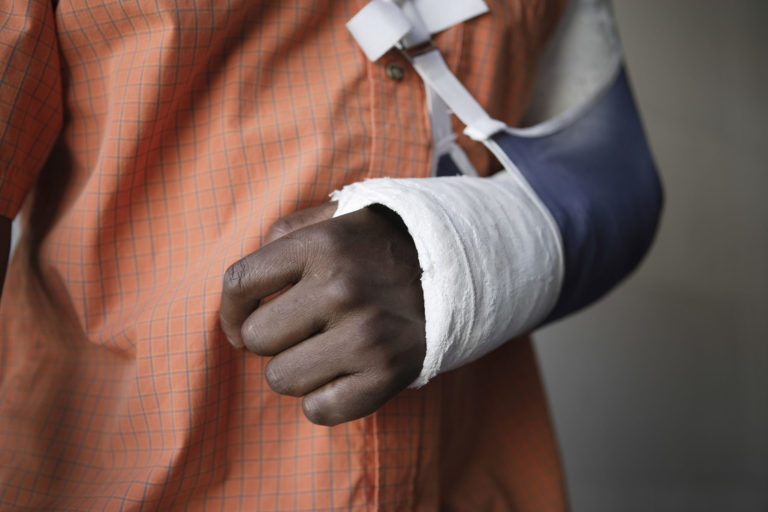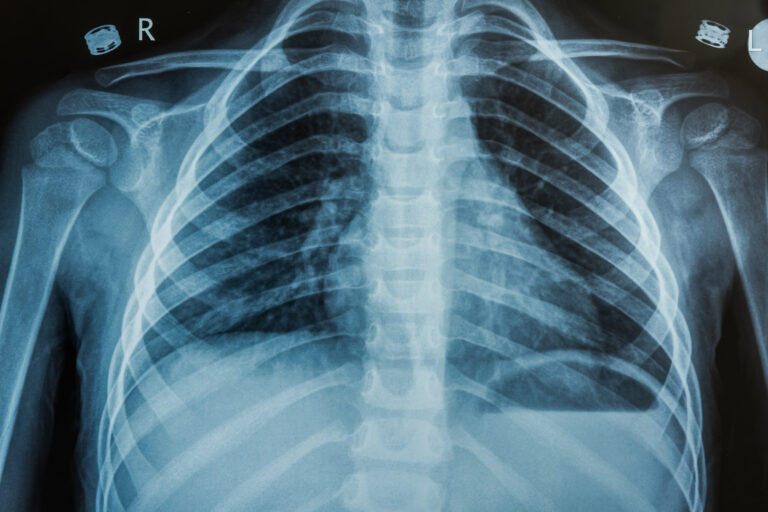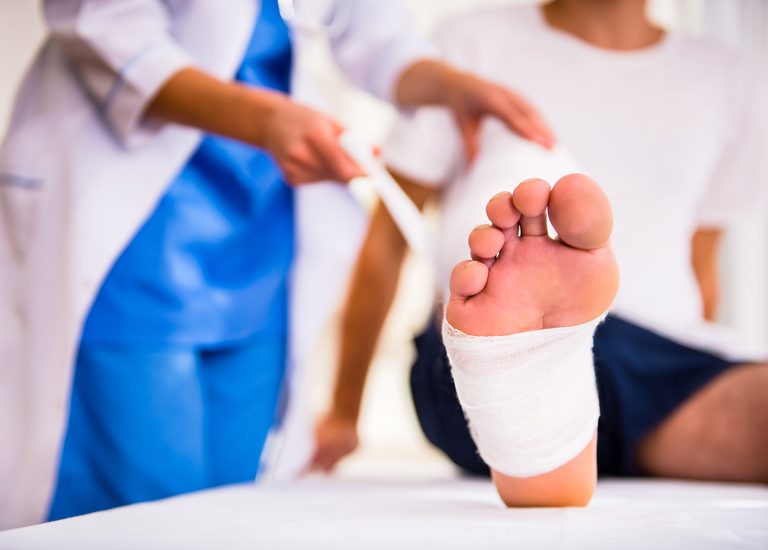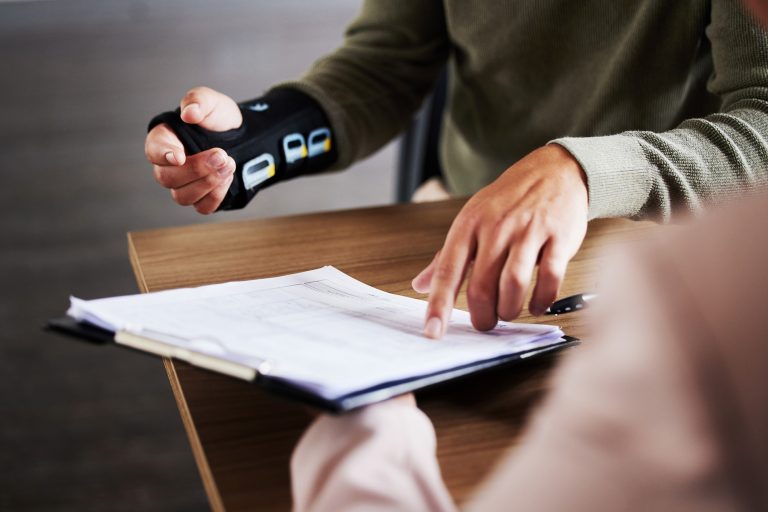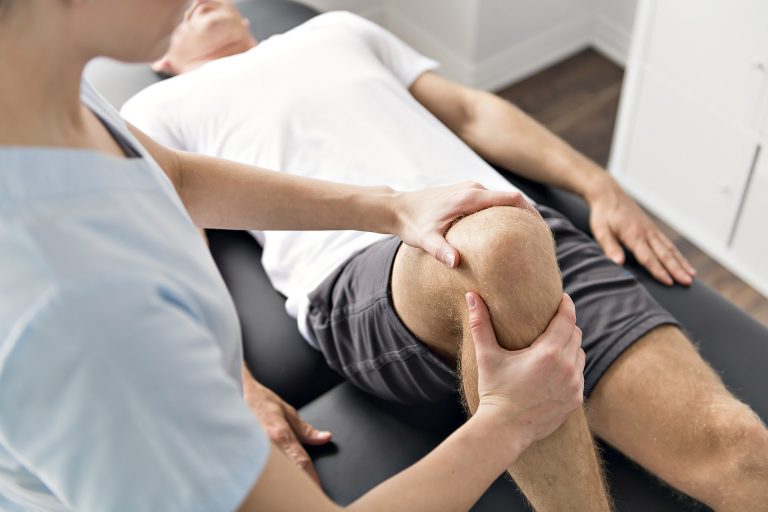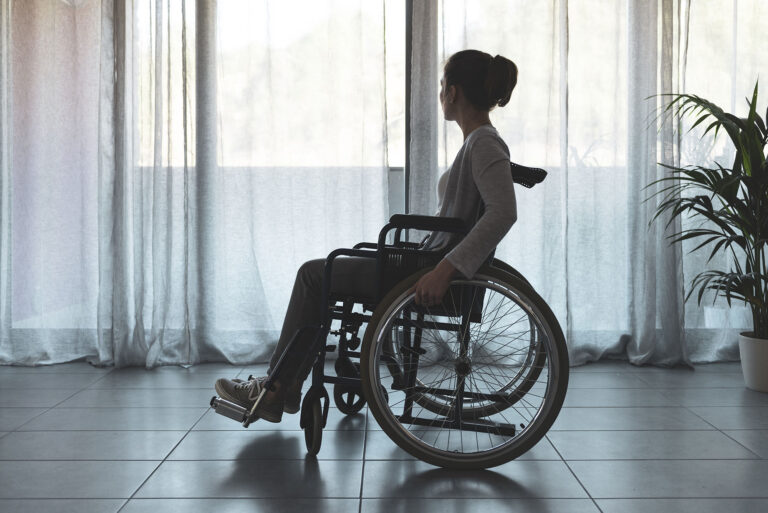Leg Injury Compensation – Reclaiming Your Life & Securing the Compensation You Deserve
A leg injury can significantly affect your daily life. Whether it’s a fracture or ligament tear, the repercussions can be profound. Not only does your mobility become restricted, but activities you once enjoyed may also become challenging. This shift can lead to frustration and feelings of helplessness. But help is at hand, as we can get you the leg injury compensation you deserve.
Typical Accidents Leading to Leg Injuries
Some of the more common forms of accident that can lead to leg injury include:
- Slips, trips and falls – These are amongst the most common forms of accidents leading to leg injuries, and may occur due to a variety of hazards. For example, a wet floor in a supermarket or shop could cause you to slip and fall heavily on your legs. Uneven pavements could cause you to trip fall onto a leg.
- Road traffic accidents – Road traffic accidents in London can often result in serious injuries to the legs. This is especially true for motorcyclists who are particularly vulnerable.
- Workplace accidents – Workplace accidents can result in leg injuries if proper health and safety regulations are not adhered to, such as those that require workers to wear appropriate footwear. Leg injuries can also be caused by heavy machinery or falling objects.
- Sporting accidents – Injuries to the leg can also happen as a result of accidents whilst playing sports, for example, colliding with players.
- Clinical negligence – Leg injuries can sometimes be sustained during medical procedures. This might happen during surgery, where nerves or muscles are damaged during an operation.
- Cycling accidents – Cyclists can end up suffering serious injuries should they be involved in an accident whilst riding a bicycle.
Different Types of Leg Injuries Caused by Accidents that You Can Claim Compensation for
There are a wide range of leg injuries that may be caused by accidents. If you have suffered any of these types of leg injury, you may be able to claim compensation, with the amount varying on the severity:
- Bruises and Contusions — the most common types of leg injuries. They occur when blunt force trauma causes blood vessels to break, resulting in discolouration and tenderness on the skin.
- Sprains and Strains — Sprains occur when ligaments, which are tissue that connects bones, are stretched or torn. Strains, on the other hand, refer to injuries in muscles or tendons, which connect muscle to bone. Both sprains and strains can result from sudden twisting or overexertion of the leg.
- Fractures — Fractures refer to breaks in any of the bones in the leg, including the tibia, fibula, femur, and patella (kneecap). Fractures can range from hairline cracks to complete breaks and may require surgery for treatment.
- Dislocations — Dislocations happen when one or more bones in a joint are forced out of their normal position. This can occur as a result of significant impact, such as during a fall or car accident.
- Knee Injuries — The knee is a complex joint that is susceptible to a variety of injuries. Some common knee injuries caused by accidents include torn ligaments (such as the ACL or MCL), meniscus tears, and patellar dislocations.
- Nerve Damage — Accidents can also result in nerve damage in the legs, which can cause numbness, tingling, or weakness. This can occur from direct impact to a nerve or from an injury that compresses a nerve, such as a herniated disc in the spine.
- Amputations — In severe accidents, the leg may become completely severed from the body, resulting in an amputation. In some cases, amputations may also be necessary due to extensive tissue damage or infection following an accident.
- Crush Injuries — Crush injuries occur when extreme force is applied to the leg, often resulting in significant damage to bones, muscles, and other tissues. These types of injuries are commonly seen in industrial accidents involving heavy machinery.
- Burns — In accidents involving fire or chemicals, injuries to the leg can range from minor first-degree burns to more serious third-degree burns that require skin grafts.
- Soft Tissue Injuries — Soft tissue refers to muscles, tendons, and ligaments in the leg. Injuries affecting these can result in pain, swelling, and limited range of motion.
- Vascular Injuries — In rare cases, accidents can cause vascular trauma in the leg, leading to decreased blood flow and potentially serious complications.
Overcoming Emotional and Physical Challenges Post-Injury
It’s normal to face emotional challenges following a leg injury. Feelings of frustration, sadness, and anger may arise as your life is disrupted. It’s vital to acknowledge these emotions and seek support from friends, family, and/or mental health professionals.
Physically, recovery can be slow and painful. Simple tasks may seem insurmountable, leading to feelings of isolation. Engaging in physical therapy can significantly aid your physical recovery. Therapists will guide you through exercises tailored for your specific injury, promoting strength and flexibility.
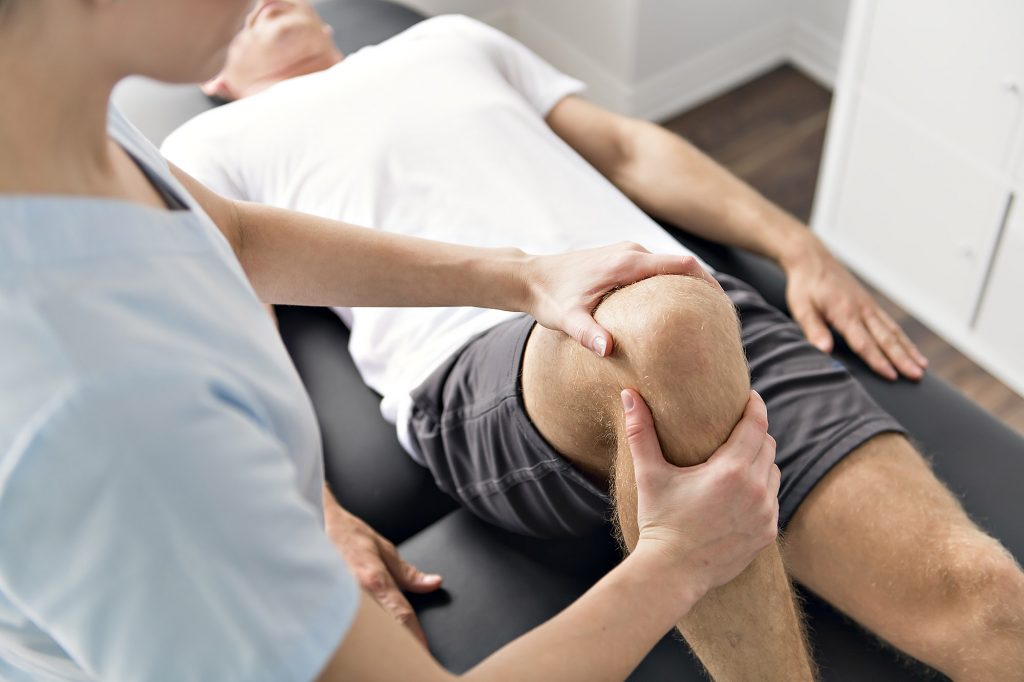
Set small, achievable goals to celebrate your progress. Each step, no matter how minor, brings you closer to reclaiming your independence. Be patient with yourself, and never hesitate to reach out for help.
Don’t forget to explore your legal options regarding leg injury compensation. Consulting with Accident Claims London can help you understand the process. Compensation alleviates financial burdens, allowing you to focus on recovery.
Documenting Your Injury: Building Your Case
Documenting your leg injury is crucial for building a strong case for compensation. Start by keeping a detailed record of the incident. Note the date, time, and location in London where it occurred, and take photographs of your leg injury. Visuals provide powerful evidence for your claim.
Obtaining a medical report will establish the severity of your injury. During your visit, medical professionals will assess your condition and recommend appropriate treatment methods. Early records of your injury are crucial in pursuing leg injury compensation later on. Maintain records of all medical treatments, appointments, and expenses.
Witness statements can also bolster your case. If someone saw the incident, ask for their contact details and a description of what they witnessed.
Finally, maintain a journal to document the impact of your injury on your daily life. This added perspective can significantly strengthen your claim for leg injury compensation.
Navigating the Legal Process for Leg Injury Compensation in London
The legal process for claiming leg injury compensation can feel daunting. However, understanding the steps involved can make the experience smoother. First, consult with a personal injury solicitor in London to assess the merits of your case. They will guide you through the legal landscape and help you gather essential documents.
Once the necessary evidence has been gathered, a letter of claim will be sent to the responsible party and their insurer. This letter outlines details about your injury and sets the groundwork for negotiations.
Be prepared for potential disputes during the litigation process. Insurers often challenge claims, particularly in occupiers liability claims, which is where having legal representation becomes crucial. Your solicitor will be an essential ally, negotiating on your behalf and ensuring that you receive fair compensation.
Typical Compensation Payouts for Leg Injuries in London
Compensation payouts for leg injuries in London can vary widely, depending on the severity of the injury and its long-term effects. Minor injuries might yield settlements ranging from £1,000 to £5,000. However, more serious injuries that require surgery or rehabilitation can lead to higher payouts.
Moderate injuries may result in compensation between £5,000-£20,000, while severe injuries, including fractures or long-term disabilities, can fetch awards upwards of £20,000-£100,000 or more.
Each case is unique, and settlements can be influenced by individual circumstances like age, profession, and overall health. Working with a qualified solicitor will help ensure you accurately assess the potential compensation you could receive, maximizing your chances of securing fair compensation.
The Role of Solicitors in Your Leg Injury Compensation Claim
When you experience a leg injury, the path to recovery can be overwhelming. Personal injury solicitors play a crucial role in helping you navigate this complex process. They specialize in understanding the law surrounding personal injury claims, making them essential for securing the compensation you deserve.
Your solicitor will assess your case, gathering evidence and medical documents to support your claim. They will negotiate with insurance companies on your behalf, ensuring you are not pressured into accepting a low settlement. This is especially important, as leg injuries often carry long-term implications that can affect your quality of life.
Their expertise can make a significant difference in the outcome of your claim, allowing you to focus on what truly matters—your recovery.
We Can Support You in Your Journey
Accident Claims London are dedicated to supporting you every step of the way, ensuring that the process of reclaiming your life is as smooth as possible. Our empathetic team is here to listen to your concerns and provide tailored legal solutions based on your unique situation.
Our commitment extends beyond just legal support; we aim to provide a stress-free experience. This means keeping you informed, advocating fiercely on your behalf, and ensuring you feel empowered during your recovery journey.
Contact Us to Take the First Step Towards Your Recovery
By contacting a personal injury solicitor ** from Accident Claims London, you are prioritizing your recovery. This decision can lead to vital compensation that will help cover expenses and lost wages, allowing you to focus on healing.
Your journey to recovery begins with a simple — and free — no-obligation conversation. Take that first step and reach out to our London team for support on 02038115808^.





